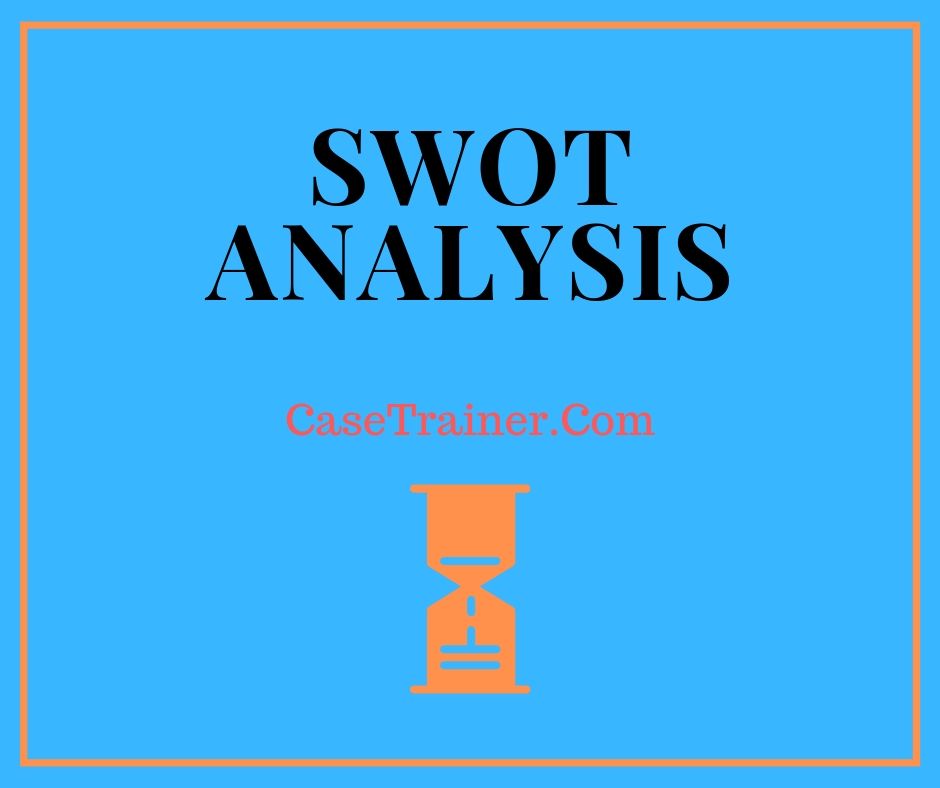Reverse Engineering Learning And Innovation Case Study Solution and Analysis
Intro
Reverse Engineering Learning And Innovation Case Study Help is the biggest publishing business with a highest market share in the China's book retail market. CMP supplies a variety of services consisting of; gathering info, processing info and interaction services. Major organisation sections of the business include; books, periodicals, consultancy and circulation. The company has a huge item portfolio and its major products include books, regulars, online media, exhibitions, research study reports etc. Reverse Engineering Learning And Innovation Case Study Analysis has become a specialized info service provider and a big extensive Science and Innovation publishing business through the integration of print media, audio-visual media and the network media.
Important Problems
CMP has invested its 60 years journey smoothly, being an effective publishing house, however, the changing macro market trends and forces bring particular difficulties to the publishing industry in general and Reverse Engineering Learning And Innovation Case Study Analysis in specific. These elements consist of;
• Entryway of the brand-new publishing companies in the industry.
• Declining growth of the publishing market.
• Market saturation.
• Intro of digital publishing techniques
• Enhancement of science and technology.

The change of the macro markets have raised a number of concerns to the management at CPM that what could be the future of CMP in this scenario? Do the long valuable experience, technical resources and the abilities of the business could be used to pursue the future development unceasingly? How could the company sustain its long term competitive position in future?
Situational Analysis
Internal Analysis
SWOT Analysis
Strengths
Reverse Engineering Learning And Innovation Case Study Solution has particular strengths that can be utilized to reduce the threats, get rid of the weakness and get the opportunities. Strengths of CMP are offered as follows;
• The long term experience of Reverse Engineering Learning And Innovation Case Study Help in the publishing industry i.e. 60 years enables the business to supply high quality products at a lower expense utilizing its prior experiences.
• The technical resources and abilities created by its successful journey offer a competitive benefit to CMP.
• Huge item portfolioof CMP assists it to diversify its threat and provide high worth to its customers.
• Strong monetary position allows the business to consider several advancement opportunities without any worry of raising fund externally.
Weaknesses
Along with the strengths, the company has certain weak points which might increase constraints for the company in executing its advancement program. The weak points of Reverse Engineering Learning And Innovation Case Study Help are offered as follows;
• Despite of being a science and innovation publishing company, the business still has standard ways ofpublishing which are not suitable with the growing technological shift.
• CMP highly relies over the Chinese markets for its development. It should propose certain expansion plans to prevent its reliance over the Chinese markets to attain long term growth.

Opportunities
Although, the growth of the publishing industry is declining because 2008, affecting Reverse Engineering Learning And Innovation Case Study Help too, however the growth might be revived by availing certain opportunities presented in the market. The market chances for CMP consist of;
• The business could likewise present Digital Publishing by utilizing its long term technical experience and a strong consumer acknowledgment in the market.
• CMP might think about a development program through the expansion towards foreign markets in order to lower its dependence over Chinese markets by utilizing its large financial resources.
Dangers
The altering macro patterns in the market and increasing competition in the publishing market has actually positioned particular risks to Reverse Engineering Learning And Innovation Case Study Solution including;( Gurel, 2017).
• Introduction of digital publishing i.e. digital libraries could cause decreasing market share of Reverse Engineering Learning And Innovation Case Study Solution due to the customer shift towards virtual libraries.
• The existence of a great deal of competitors in the publishing industry increase the danger for CMP to lose its competitive position in the market, as competitors can acquire a strong customer base by utilizing certain methods like aggressive promotion, quality items, and so on
• Entryway of brand-new publishing firms in the market along with existence of high competition increases the hazard of losing the client base.
Financial Analysis.

The company has a rather competitive monetary performance. Due to lack of data, the financial ratios of CMP might not be computed. The total financial performance of the company could be examined by using the graphs given in the case Appendices. It could be examined from the Appendix III that the yearly overall revenues of CMP throughout the duration 2000-2012 are growing at a high growth rate, showing that the annual demand of the products of Reverse Engineering Learning And Innovation Case Study Analysis is growing and the company is quite efficient in attracting a large number of customers at a possible price.
In addition to it, the 2nd graph which reveals the annual development in the Reverse Engineering Learning And Innovation Case Study Help overall properties, reveals that the company is quite efficient in including worth to its possessions through its earnings. The development in properties shows that the overall worth of the firm is likewise increasing with increasing the total earnings. (Unidentified, 2013).
Another monetary analysis of the business utilizing the offered information might be the analysis relating to the circulation of overall revenues of the company. Major part of the earnings of CMP comes from the sales of its released books i.e. 64% as displayed in the Case Appendix V. The company could move towards other business sectors with a potential growth to accomplish its future development objective.
PESTEL Analysis
PESTEL analysis might be carried out to discover the various external forces impacting the performance of the business and the current patterns in the external environment of the company. A short PESTEL analysis of the business is provided as follows; (Alanzi, 2018).
Political.
As the publishing sector might have a substantial impact on the mindset of individuals about the communist ideology of the government, for that reason, the publishing sector is highly monitored and guided by the Publicity Department of the Communist Celebration of China. It could be stated that the total political forces impacting CMP organisation are high. The federal government policies concerning the publishing sector are also increasing with the passage of time.
Cost-effective.
Financial forces impacting the publishing sector in basic and the CMP in specific includesthe costs of paper, the earnings level of consumers, the inflation rate, and the total GDP development of the nation. All these forces integrate effect the need for the publishing market.
Social and Demographical.
The customer preferences are shifting towards digital publishing rather than the traditional was of publishing. In this regard, CMP should focus on digital publishing to satisfy the altering customer preferences.
Technological.
Technological forces impacting the CMP include the technological advancement in the reading methods and so on. Enhancement of science and technology together with the increase of digital publishing could decrease the need for the CMP products, if specific actions would not be taken quickly.
Environmental.

Environmental forces affecting Reverse Engineering Learning And Innovation Case Study Solution includes the issues of environmental communities over the use of paper in publishing books. The paper utilized in the books while publishing is needed to be non reusable and the ink used while publishing must not be damaging for the environment.
Legal.
Legal guidelines for the publishing sector at whole are high. Publishing Ordinance 1997 requires the publishers to be approved initially by the Federal government to be entered in the publishing market.
Industry Analysis (Porter's Five Forces Design).
Porter's Five Forces Model could be used to analyze the beauty of the publishing industry China. A short analysis of the Porter's Five Forces is given as follows;.
Danger of New Entrants.
Hazards of brand-new entrants in the Chinese Publishing Industry is moderate. The potential growth in the industry tends to attract new entrants to the publishing industry. Nevertheless, the presence of extreme competition and the requirement of huge capital tends to demotivate new entrants to enter in the marketplace.
Risk of Substitution.
Danger of Alternative is high for the Chinese Publishing Market. The substitute items for the published files is the documents presented in the digital libraries on particular sites. The changing customer choices towards digital learning increase the danger of substitution for the market.
Competitive Rivalry.
Competitive competition in the publishing market is high. The presence of a great deal of consumers in the Chinese Publishing Market like CIP, PTP and so on tends to produce high competitive competition for CMP. Along with it, new entrants are also entering into the marketplace increasing the competitors for CMP.
Bargaining Power of Provider.
The major suppliers of the Reverse Engineering Learning And Innovation Case Study Analysis consist of the suppliers of the paper for releasing files. As CMP is the biggest publisher in the Chinese Publishing Market, therefore the overall bargaining power of provider for CMP is low.
Bargaining Power of Buyer.
Haggling power of buyer in the publishing market is high. Due to the presence of a large number of publishers in the Chinese market and the marketplace saturation, the buyers needs high quality files at competitive rates.
Rivals Analysis.
CMP runs in an extremely competitive market with the presence of large number of rivals. The company has a competitive position in the market with the highest market share in the Chinese publishing market. Major rivals of Reverse Engineering Learning And Innovation Case Study Analysis include;.
• Chemical Industry Press (CIP).
• Posts and telecommunication Press (PTP).
Chemical Market Press (CIP).
CIP acts as a hazard for CMP as it might wean its market share due to its long term competitive background. CIP is focused on digital publishing and might wean the market share of CMP easily in the existing market scenario.
Posts and telecommunication Press (PTP).
It was likewise founded in the exact same period as Reverse Engineering Learning And Innovation Case Study Analysis and CIP. It is also one of the prominent gamers in the publishing industry with an annual overall earnings of RMB 550 million in 2010.
Alternatives
Alternative-1: Broaden towards New Markets
Pros
• Minimizing dependence over the Chinese markets.
• Increasing number of Consumers
• Growth chances.
• Preventing the effect of market saturation in the Chinese publishing market.
Cons

• Usage of potential resources in expansion.
• Danger of failure in new markets.
• Time consuming.
Alernative-2: Present Digital Publishing
Pros
• Sustaining consumer base.
• Approaching brand-new markets.
• Easy to introduce utilizing existing capabilities.
• Low threat of Failure.
• Low requirement for funds.
• Increased item portfolio offers high value to customers.
Cons
• Competitors in the market by CIP, who has prior concentrate on the digital publishing.
• Shift of focus from the core organisation sectors to the brand-new one can lead the business to lose demand of its items in the market.
Recommendations
As the choices are moving towards digital publishing and the company require an immediate option to avoid the declining market growth. The company could also think about the growth program after the success of its digital publishing program.
Application
In order to introduce digital publishing in its item portfolio, the business needs to initially collects the information related to the customer need, the prospective markets, the government guidelines and the information related to the rivals provided in the market. If the initial offering shows a success, the business should go for the other markets. In this way the company would be able to execute its digital publishing program.
Conclusion
The development of the publishing industry is decreasing given that 2008, revealing a hazard to the company's long term presence, however the situation can be managed by thinking about an advancement plan in the future. The business could consider introducing digital publishingin its existing market to execute its development program at instant basis and to avoid the threat of failure for entrance in the new markets.

